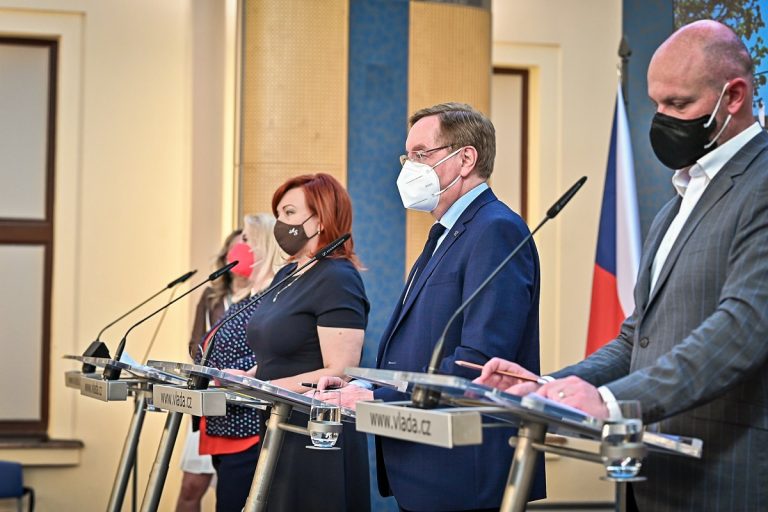From May 3rd, pupils in the Hradec Králové, Karlovy Vary, and Plzeň regions can return to primary schools on a rotating basis. From the same date, beauty salons will be able to open throughout the country. The government will assess the previously announced opening of stores on Thursday. Photo Credit: Vlada.cz.
Czech Rep., Apr 27 (BD) – At a meeting yesterday, the government discussed changes to the Ministry of Health’s extraordinary measures.
The government approved the reopening next Monday of hairdressing, cosmetics, manicures, animal care services, spa treatment and rehabilitation care, on condition that each member of staff is dedicated to one single client, two meters of distance is kept between customers, and each client presents a valid negative test, proof of completed vaccination, or proof of having contracted Covid-19 in the last 90 days.
In the Hradec Králové, Plzeň, and Karlovy Vary regions, museums, galleries, castles, chateaux, and other historical or cultural attractions will be open for individual visitors, who will be required to use respirators. In the same regions, students in the first year of gymnazium, first-year students at the conservatory’s educational program, and primary school students in the second level will be able to attend school on a weekly alternating basis. Sports will be allowed in schools that are open schools, with more flexible rules in place in Hradec Králové, Plzeň, and Karlovy Vary regions.
The Ministry of Health has also added India to the list of countries at extreme risk. Czechs and residents of the Czech Republic are prohibited from traveling to countries with extreme risk, and those returning from these countries will be subject to strict quarantine rules.
In other measures, the government agreed to increase the funding from the state budget allocated to extraordinary remuneration for employees of medical facilities, and approved a financial Convergence Program, setting the intentions and goals of the government’s economic policy for 2021–2024, in response to the anticipated increase in the public deficit to 8.8% of GDP and debt to 44.8% of GDP.






